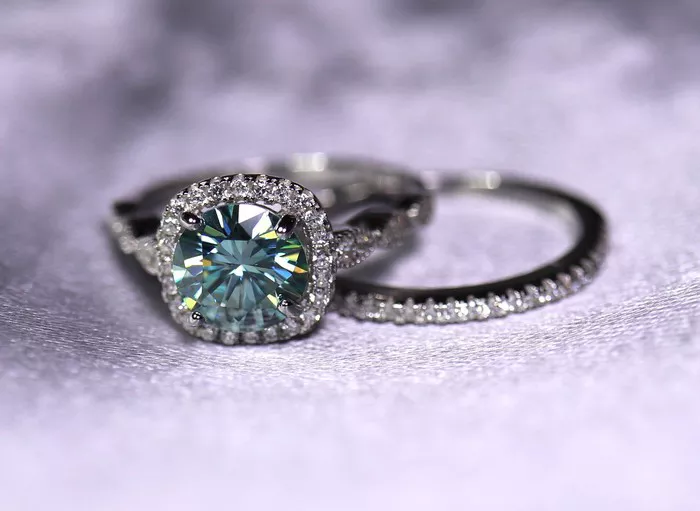Choosing an engagement ring is a momentous decision that involves considering various factors, with the size of the diamond often taking center stage. While personal preferences and budget play significant roles in this decision, understanding what constitutes a “decent sized” diamond requires exploring factors such as carat weight, diamond shape, quality considerations, and cultural perceptions. This article aims to provide clarity on what constitutes a decent sized diamond for an engagement ring, offering insights into the characteristics that influence its perceived value and impact.
Understanding Carat Weight
What is a Carat?
Definition: A carat is a unit of measurement used to denote the weight of a diamond. One carat is equivalent to 200 milligrams, and diamonds are often weighed to the nearest hundredth of a carat (e.g., 1.25 carats).
Perceived Size vs. Actual Size
Visual Perception: The size of a diamond is influenced not only by its carat weight but also by its cut, shape, and how the stone is set in the ring.
Illusion of Size: Diamonds with certain shapes (e.g., oval, pear) and well-proportioned cuts can appear larger than their actual carat weight due to the way light reflects and refracts within the stone.
Factors Influencing Diamond Size Perception
Diamond Cut and Shape
Brilliance and Sparkle: A well-cut diamond reflects light effectively, enhancing its brilliance and making it appear larger and more impressive.
Shapes and Proportions: Certain diamond shapes, such as round brilliant and oval, are known for their ability to maximize sparkle and appear larger compared to others like emerald or marquise cuts.
Setting Style
Optical Illusions: The setting of the diamond in the ring can influence how large the stone appears. Settings that raise the diamond higher above the band, such as prong or halo settings, can create an illusion of greater size.
Enhancements: Halo settings, where smaller diamonds surround the center stone, can add to the overall perceived size and sparkle of the engagement ring.
See Also: Do You Sleep with a Diamond Ring On?
Cultural and Social Considerations
Trends and Expectations
Cultural Norms: Expectations regarding the size of an engagement ring vary across cultures and societies. In some cultures, larger diamonds are seen as symbols of wealth and status, while in others, the emphasis may be more on the quality and craftsmanship of the ring.
Social Influences: Trends in popular culture and celebrity engagements can influence perceptions of what constitutes a “decent sized” diamond for an engagement ring.
Quality Considerations Beyond Carat Weight
The 4Cs of Diamond Quality
Cut: A diamond’s cut grade affects its sparkle and brilliance. Well-cut diamonds can appear larger and more impressive than poorly cut stones of the same carat weight.
Color: The presence of color in a diamond can affect its perceived size. Colorless or near-colorless diamonds (graded D to J on the GIA color scale) are highly valued for their purity and ability to reflect light.
Clarity: Diamonds with fewer internal flaws (inclusions) and surface imperfections (blemishes) appear more brilliant and can enhance the perceived size of the stone.
Certification: Diamonds certified by reputable gemological laboratories, such as the Gemological Institute of America (GIA) or the American Gem Society (AGS), provide assurance of their quality and characteristics.
Practical Considerations
Budget and Personal Preferences
Affordability: The cost of a diamond increases exponentially with carat weight due to rarity and demand. Setting a budget and prioritizing factors like cut quality can help achieve a balance between size and overall appearance.
Personal Style: Some individuals prioritize size, while others may value craftsmanship, ethical considerations, or the sentimental value of a diamond.
Trends in Engagement Rings
Shifting Preferences
Alternative Stones: Increasingly, couples are exploring alternatives to traditional diamonds, such as colored gemstones (e.g., sapphires, emeralds) or lab-grown diamonds and moissanite, which offer larger sizes at a lower cost.
Customization: Custom-designed engagement rings allow couples to create unique pieces that reflect their individuality and personal preferences, including the size and type of gemstone used.
Ethical and Sustainability Considerations
Responsible Sourcing
Ethical Diamonds: Demand for ethically sourced diamonds, certified as conflict-free, continues to grow as consumers prioritize sustainability and responsible mining practices.
Lab-Grown Diamonds: These diamonds are chemically and optically identical to mined diamonds but are created in a controlled environment, reducing environmental impact and ethical concerns.
Conclusion
Selecting a “decent sized” diamond for an engagement ring involves balancing personal preferences, cultural influences, budget considerations, and quality factors. While carat weight is a significant aspect of diamond size, other factors such as cut, color, clarity, and setting style can greatly influence the overall appearance and perceived value of the ring.
Ultimately, the definition of a “decent sized” diamond is subjective and varies based on individual preferences and circumstances. Whether opting for a classic round brilliant diamond or exploring alternatives like colored gemstones or lab-grown diamonds, couples have a wealth of options to choose from, each with its own unique allure and symbolism.
As couples embark on the journey of selecting an engagement ring, they are guided not only by aesthetics and tradition but also by the profound meaning and significance attached to this symbol of love and commitment. The perfect engagement ring is one that resonates personally, symbolizing the beginning of a new chapter in their lives and the promise of a future filled with love and happiness.

